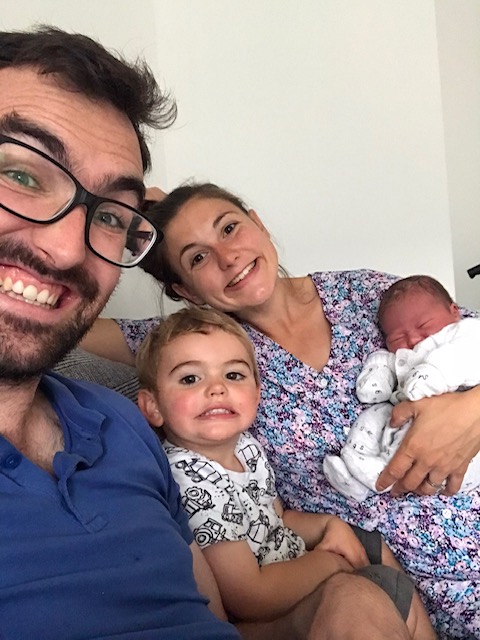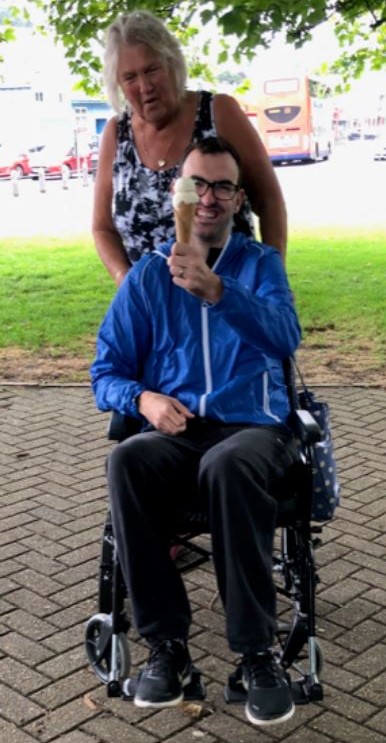By Codi Darnell
July 6, 2021
 There are many ways we humans mark the passing of another year – birthdays, anniversaries, and the actual shift of the calendar on New Year’s Eve, just to name just a few. These celebrations frequently pass with reflections of the lives we lived in the previous 365 days, days that often blur together with routine and don’t always feel different than the days and years that passed before them. Other years, however, feel more significant. Dates that once meant nothing become relevant markers in your personal timeline, and the 365 days that pass between one and the next hold the moments that changed everything. For Sean Downing, that date was June 17, 2020.
There are many ways we humans mark the passing of another year – birthdays, anniversaries, and the actual shift of the calendar on New Year’s Eve, just to name just a few. These celebrations frequently pass with reflections of the lives we lived in the previous 365 days, days that often blur together with routine and don’t always feel different than the days and years that passed before them. Other years, however, feel more significant. Dates that once meant nothing become relevant markers in your personal timeline, and the 365 days that pass between one and the next hold the moments that changed everything. For Sean Downing, that date was June 17, 2020.
The day began much like most days for Sean. At his home in Devon, England, he was immersed in the morning routine with his wife, Beth, and almost-two-year-old son, Henry. When he discovered his shoes were still wet from a day at the beach and, therefore, not appropriate for work, he went to the garage in pursuit of a different pair. But before he got there, he fell to the ground where his wife found him and called for an ambulance. What they later learned was that Sean, at 28 years old, had suffered a stroke. It was day one of a new 365-day countdown.
The next 10 days were spent in the hospital where Sean assessed the damage to his body. While his left arm was completely paralyzed and his left leg significantly impaired to the point that he required a wheelchair, he was thankful to have his speech and his thoughts, and that the only cognitive symptom was exhaustion. Intense physical therapy started soon after, but his prognosis was vague. It seemed nobody knew what to expect from his recovery. What was clear though, was that in order for Sean to go home, he needed to be able to safely transfer himself from his wheelchair to his bed. This became his focus and once achieved, he was homeward bound.
 With his wife and son unable to visit him in the hospital due to the COVID-19 pandemic, Sean’s homecoming was all the more welcome. But however welcome, the transition wasn’t simple.
With his wife and son unable to visit him in the hospital due to the COVID-19 pandemic, Sean’s homecoming was all the more welcome. But however welcome, the transition wasn’t simple.
Sean explains, “Normally with a discharge from hospital, you would go home and everything would be alright. However, this was not going to be the case.”
Because, while Sean and Beth always attacked life as a team, he knew that now Beth, who was also eight months pregnant, would not only be in charge of caring for their son, Henry, but for him as well. The shift was a source of frustration for Sean. However, despite all of the changes and the future being full of unknowns, both Sean and Beth burst into “tears of happiness” when he came back through the doors of their home.
Physical therapy continued with a focus on walking, hand dexterity and strength, and Sean progressed quickly. By four weeks post-stroke, he could move his arm independently. By five weeks, he could walk down his hallway unassisted. And at the seven-week mark he lifted his son high into the air to which he said, “This is huge! Not being able to lift my own boy up when he needed a cuddle was the worst emotionally.”
Those child-lifting skills became extra useful when, at two months into his recovery, Sean and Beth welcomed their second son, Max, to the family.
 After three months, he said goodbye to his stairlift and wheelchair. He was walking, climbing stairs, and even getting out on the golf course. Two months after that, he was back at work as a schoolteacher in a reduced capacity.
After three months, he said goodbye to his stairlift and wheelchair. He was walking, climbing stairs, and even getting out on the golf course. Two months after that, he was back at work as a schoolteacher in a reduced capacity.
After six months of swift progress, his recovery slowed. While Sean still improved, it was at a reduced paced. But his attitude and his support system stayed strong as they shifted to taking it one small goal and victory at a time.
Eventually, all of those days and milestone moments added up to a year. Sean reflected on his year of recovery in a recent blog post. Even with all of his positive progress, he still deals with residual effects from his stroke. His balance is still affected and he cannot move his left foot. Some manual tasks that were once simple are now frustrating, but he keeps trying and adapting while refusing to put limits or expectations on further recovery. Come September, he will be back to teaching at full capacity to a classroom of seven- and eight-year-olds.
To sum up Sean’s year since his stroke, he credits his wife for all of the amazing ways she showed up for him and how he found strength in her and in their children. He says, “If this last year has taught me anything, it’s taught me that no matter what life throws at us, I know I can count on (her) to pull us through, and we will all be standing there together at the end of the storm.”
